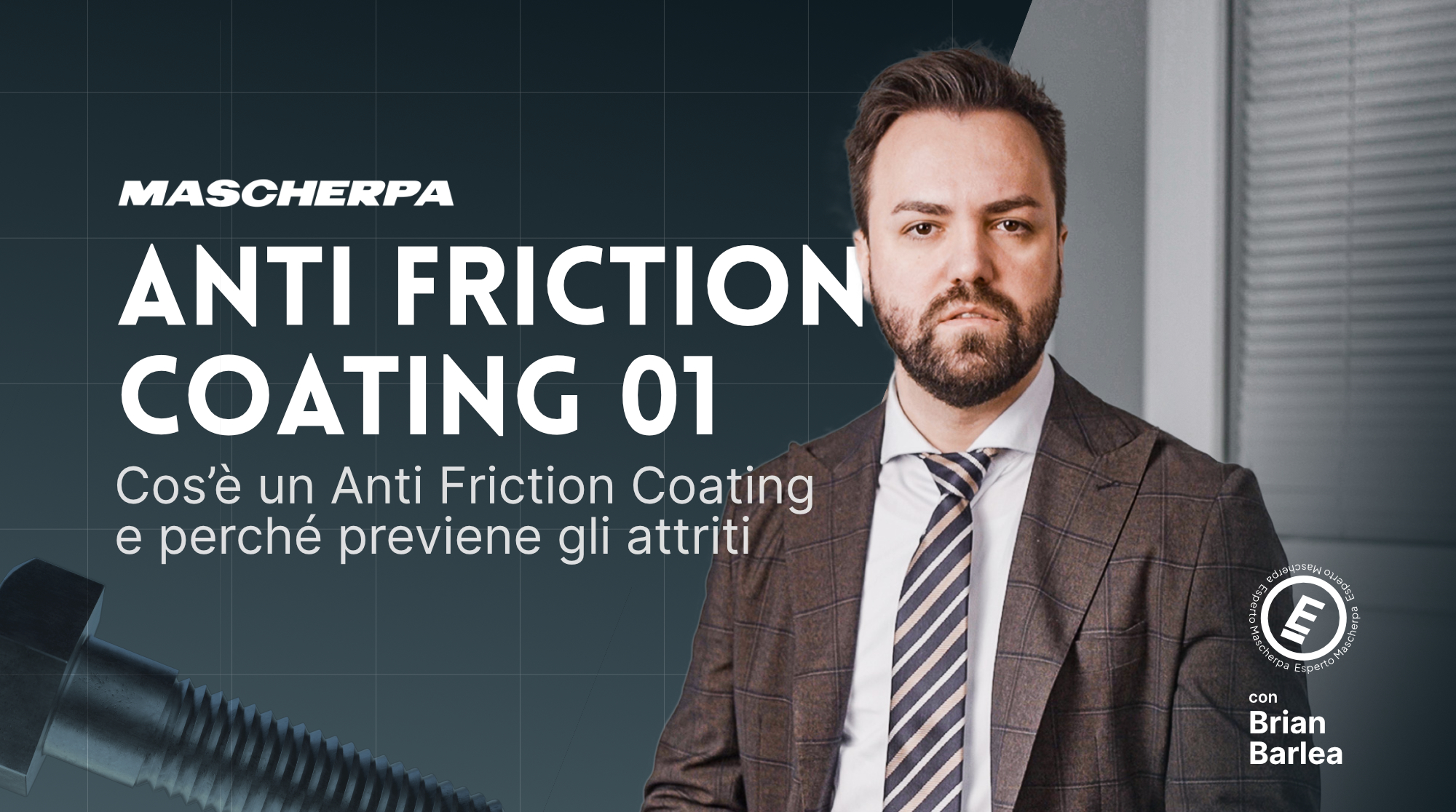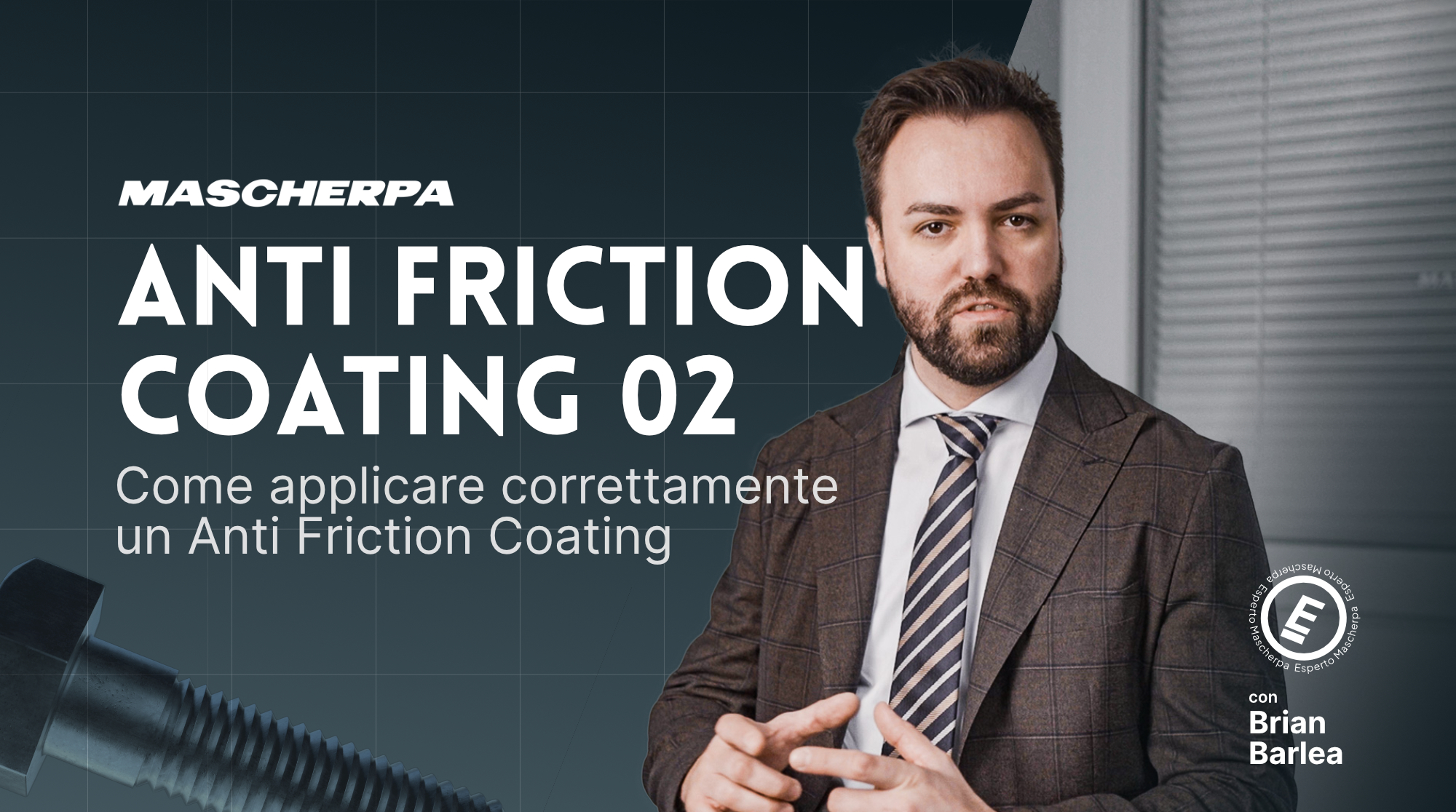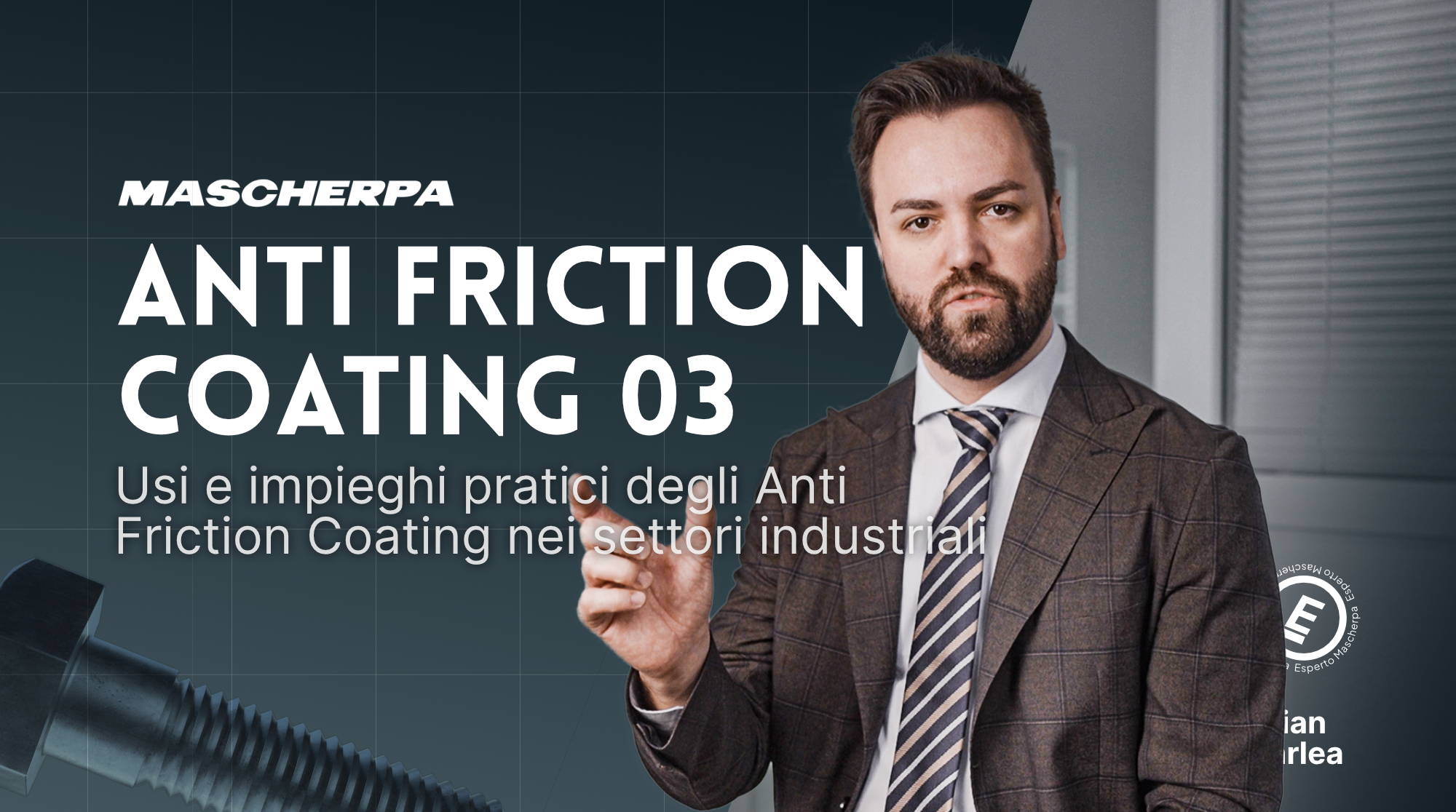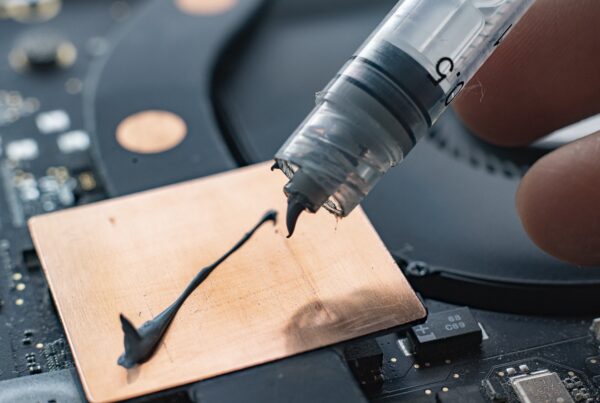Key points of the article
- Molykote dry lubricants, known as Anti-Friction Coating, are thin paint-like coatings that reduce friction and ensure
consistent performance over time, even under extreme conditions. - Their formulation is based on thinner, resin, lubricating solids and additives, each with a specific role in determining adhesion, strength and functional characteristics of the product.
- The main lubricating solids used(PTFE, MoS2 and graphite) offer different performances in terms of friction, load resistance, color and temperature range, up to more than 600°C.
- Application techniques(spraying, dipping, coil coating, screen printing, etc.) allow for wide versatility, but require proper surface preparation and targeted curing processes to ensure durability and efficiency.
- These coatings are widely used in industries such as automotive, aerospace, security and industrial maintenance, improving comfort, reliability and reducing operating costs.
Molykote dry lubricants, also called Anti-Frictiong Coating, are anti-friction coatings specially formulated to have certain properties. If we look closely at one of these dry lubricants, we can identify three macro-components and a fourth component present in a smaller percentage:
- The thinner (55%)
- The resin (12%)
- The lubricating solids (30%)
- Additives (3%)
The thinner
The thinner, which can be either solvent or water, is used to dilute the resin in the product, adjust its viscosity and act as a “vehicle,” that is, the element that brings the resin, lubricating solids and additives to the surface affected by the dry lubricant application and then evaporates, thus leaving the surface completely dry.
Resin
The resin holds the solid lubricants and additives together, helps increase the adhesion of the Anti-Friction coating, and provides other secondary properties, such as supporting corrosion protection.
The different types of resin in dry lubricants
There are different types of resin, but those that are mainly found in coatings Molykote are:
- epoxy
- polyamide-imide
- phenolic
- polyurethane
- acrylic
- inorganic
Depending on which resin is used, certain characteristics are achieved; for example, employing an Anti-Friction Coating with an epoxy resin provides chemical resistance, excellent temperature range, corrosion resistance and high mechanical strength. On the other hand, if we want to increase the “hardness” of our dry lubricant,

Additives
The resin holds together solid lubricants and additives. The latter regulate some characteristics of the dry lubricant, such as surface tension, wettability, anti-settling , and dispersion.
Solid lubricants
Solid lubricants, on the other hand, are the real stars of dry lubricants, since they provide the necessary lubrication and enable friction regulation and control.
The main technologies found of Molykote ‘s Anti-Friction Coating are:
- PTFE
- Molybdenum Bisulfide (MoS2)
- Graphite
- Secondary synthetic lubricants
Again, as with resins, depending on the type of solid lubricant, certain characteristics are obtained. For example:
Coefficient of friction and load resistance
PTFE lubricating solids provide an important reduction and adjustment of the coefficient of friction for low to medium loads; however, when these loads become very important, such as above 500 or 1,000 Mpa, MoS2 and graphite have been found to perform much better, holding a low and constant CoF, which decreases as the load increases.
Temperature range
If a dry PTFE lubricant can have a temperature range, for example, [-80, +250°C], one with MoS2, can go beyond 400°C and withstand even extremely low temperatures, for example, -200°C, while one with pure graphite even up to 600°C.
Color
Anti-Friction Coating with MoS2 and/or graphite range from dark gray to black, which makes these products non-pigmentable, unlike that with PTFE lubricants, which are colorless and thus you can have specific customization as needed.
Secondary effects
The main objective of an Anti-Friction Coating is to lower the coefficient of friction as much as possible and keep it constant during the service life of the treated component. However, you also have other benefits, such as, for example: insulation, or electrical conduction, chemical resistance, corrosion resistance, and others, depending on how our dry lubricant is composed, what resin and what solid lubricant it contains.
How is Anti-Friction Coating used?
The choice of a dry lubricant is not only about the properties we want to achieve, but also very important are the conditions of applicability such as:
ease of use, curing, and the equipment available.
The different applications of Molykote dry lubricants
Molykote anti-friction coatings can be applied in a variety of ways:
- spray (spray grease)
- electrostatic spray
- immersion and immersion-centrifugation
- roller systems
- silkscreen printing
- coil coating
- spray cans
- manual applications
Advantages and disadvantages in dry lubricant application methods
Applications using spray methodology look great and have an excellent finish, but they require special attention during application, a precise set-up specific to the component being treated, and an overspray to be considered unless it is an electrostatic application.
If, on the other hand, we have components that lend themselves to bulk treatment, such as screws, springs, or small parts in general, it may be advantageous to consider immersion and centrifugation, where the finish will perhaps be somewhat less precise than that of aspray application, but the application times sononoteably reduced and the functionality of the dry lubricant is achieved nonetheless.
Finally, there are cases where it is advantageous to precisely design the application and proceed with coil coating, or screen printing where, similar to a stamping process, a negative is drawn and the coating is applied with extreme precision, with dedicated automation.
Impact of the thickness of Anti-Friction Coating in a project?
The thickness of the dry lubricant impacts very little since we are talking about an application of a thin lubricant film, which can range from 7-8 microns to 35, depending on the application. In any case, one must keep in mind that this is a process-related viability above all.
In fact, the dry lubricant already works very well at the smallest thicknesses. In addition, it is important to keep in mind that this thickness will still reduce as a result of run-in, that is, the first cycles of load application that will either slightly compress the PTFE solids or align the molybdenum disulfide lamellae.
Polymerization
Very often, a subdivision of Anti-Friction Coating is found in the literature according to the way in which polymerization takes place. This reaction can occur mainly in two ways: polymerization at room temperature or at high temperature, depending on the type of resin used in the coating.
Thus, there are seco lubricants, such as the Molykote® 7400 or the Molykote® D-321 R, in which you simply proceed with the application and then leave the component at room temperature (about 23°C) for 30-40 minutes and it is ready to be used.
If, on the other hand, coatings with different performance requirements, such as the need for corrosion protection or chemical resistance, one can proceed with the Molykote® 3400 A LF, or Molykote® D-6600, or even Molykote® D-708. These Anti-Friction coatings needhigh-temperature curing , which can be 200°C for 20 minutes, so it is necessary to provide for the use of an industrial oven in our process.
Surface preparation before application of dry lubricants
An important aspect for the proper functioning of these anti-friction coatings is definitely surface preparation.
Adhesion is dependent on the type of dry lubricant, depending on the resin, but it is mainly dependent on the type of surface to which the coating will adhere.
Take, for example, a metal-to-metal application; in addition to cleaning the surface, it could be extremely useful to apply a micro-sandblasting, so as to obtain a roughness and surface micro-undercuts to which the resin can cling. Even better may be to apply a thin phosphating, which goes to create a prismatic, lamellar or needle-like surface structure, depending on the type of phosphating, to which the coating will anchor.
When to Use Anti-Friction Coating
If two surfaces are considered, with zero relative velocity. We are in a condition of static friction, that is, there is no mutual motion of the two surfaces and the system is stationary.
Let us now imagine that we apply some momentum to one of the two surfaces: entering a condition of dynamic friction, where the two surfaces are still in contact, but there is relative velocity and creep between the parts. Continuing to increase the velocity will lead to a certain point where the two surfaces are no longer in contact. Up to the point where the two surfaces do not separate we can speak of “mixed” friction, while at the stage of separation we speak of “hydrodynamic” friction value.
Anti-Friction Coatings are preponderant in that area where friction is mixed, where there is still contact between the surfaces, whether metal-to-metal, metal-to-plastic, or plastic-to-plastic, before there is separation of the parts in the hydrodynamic area, where friction control is primarily by a NON-dry lubricant, such as a grease, or oil.
Always remember that these anti-friction coatings can be used in combination with other lubricants, indeed, very often it happens, so as to cover the entire speed domain of our system.
Sectors in which MOLYKOTE dry lubricants are used
Molykote® Anti-Friction Coating are widely used in many industries:
- Automotive e Aerospace: either as special component lubrication or to improve industrial processes; a particular family of applications
in this area is the NVH (Noise, Vibration and Harshness), where, in combination with other lubricants, such as damper greases, these coatings can make a real difference, absorbing vibration reducing unwanted unwanted and increasing comfort in our vehicle. - Safety: these coatings can be applied for those components crucial to the proper, safe operation of a system; for example:
seat belts, lock mechanisms, linkages, forks, seals, etc. - Fluid handling and transport: for example, in valve adjustment screws, where it is preferable not to have fluid lubricants act as a receptacle for dirt, so dry and clean coating is a good solution.
- Maintenance in industrial plants: coatings such as Molykote® D-321 R, but not only, can find wide use in the maintenance of various components in industrial automations; for example, chains or conveyor systems in general, gears, springs, maintenance of injection molds, and everything assembly.
Discover Molykote’s range of dry lubricants on our website
Molykote dry lubricants offer versatile, high-performance solutions for a wide range of industrial applications.
Choosing the right Anti-Friction Coating can make all the difference in efficiency, durability and component performance.
If you would like to learn more about this topic or are unsure which product is best for your needs, Mascherpa experts are available to provide support and advice.
Visit the page Mascherpa Expert to find out more and stay updated: a dedicated video with more details and insights will be available soon.






